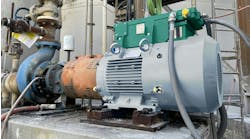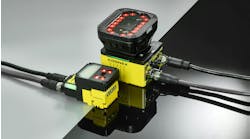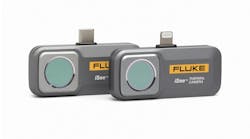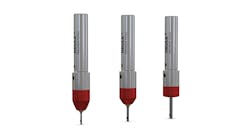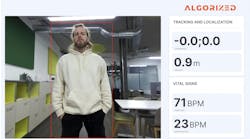Food processors and warehouse professionals often require creative pallet racking solutions in order to be most effective and profitable due to seasonal cycles such as the harvest, consumer demand, and other logistical concerns.
Without such support, crowded production and storage facilities may need to purchase or lease off-site storage space for at least a portion of the year. Besides the extra overhead, this involves, it can also entail double-handling of product or inputs, along with more complex coordination than simply storing everything in-house.
Fortunately for food industry professionals, many proven yet inventive alternatives exist beyond floor storage and selective racking that can be customized to specific needs and processes. In one such case involving pallet flow racking, a global food producer was able to triple its onsite storage while streamlining production at an existing facility.
GLK Foods, family-owned for four generations, has grown into the largest kraut producer in the world and is an innovator of top-selling grab ’n go snacks. Such growth has required implementing some industry best practices in terms of optimizing storage and production.
So, when the company’s Bear Creek, WI facility reached its onsite storage capacity and required offsite storage during the busy fall harvest season, Brad Froberg, Plant Manager, sought a solution.
“We were looking to triple our available pallet storage and streamline production at our existing facility,” says Froberg. “We run product year-round, but in the fall, as cabbage crops come in, we have to ramp up our production lines for a specialty kraut product.”
According to Froberg, previously pallet floor storage was utilized in the facility for the specialty kraut product. He notes that the product was not stackable, so the pallets were stored in a single file across the floor.
“The challenge was that inventory processing and inventory storage all went through the same room and became a production bottleneck. This led to leasing offsite storage and the inefficient double handling of product,” says Froberg.
Froberg consulted with Wisconsin Lift Truck, a full-service material handling distributor in the Midwest, whose representative, Mark DeCleene, recommended an approach to streamline the facility’s available storage and lift truck fleet management.
The approach used an SK3400 Pallet Flow system from Steel King Industries, a designer and manufacturer of warehouse material handling, storage and safety products with a national dealer network.
Such pallet flow racking can store up to 100% more product than selective racks and reduce aisle space by 75%.
However, to optimize pallet flow, more planning and precision can sometimes be required than with traditional storage. With pallet flow, dynamic flow rails are inclined in a static rack structure, allowing loads placed on one end to move by gravity on rollers to the unloading end, with speed controllers acting as gentle brakes.
When pallet flow is properly designed and installed, as each pallet load is removed, the pallets behind it move forward automatically. Once loaded, first-in-first-out (FIFO) product rotation is automatic. Forklifts are only required for the initial loading and final unloading because the rack eliminates the labor and forklift operation required to arrange loads in traditional racking.
Because the dynamic flow system height, width, and depth were limited only by the size of the facility and capabilities of the material handling equipment, it was a good fit for GLK Foods’ space-efficient, high volume needs at the Bear Creek, WI facility.
With 850 pallet positions in racking five levels high, the pallet flow system exceeds 27 feet and was built with SK2000 Closed Back Tubular Rack for strength and durability. Compared to open back roll formed columns, the closed tubular uprights are 44 times more torsion/twist-resistant, with 250% greater frontal impact resistance and 68% greater side impact resistance.
All beams are constructed of high-strength (55,000 p.s.i. minimum) steel, and holes are placed on the column's face, not the corners, minimizing strength loss.
“We selected a robust racking system that is able to resist forklift damage. By design, the closed-back rack is safer, stronger, and more durable than an open-back rack,” says Froberg.
To take full advantage of the facility’s vertical space, the pallet flow system was installed at a height of 27.5 feet. Access to the top racks is enabled by the use of a high-reach fork truck, as recommended by Wisconsin Lift Truck.
“The pallet flow system has tripled storage space at our facility while streamlining processing and production,” says Froberg, “We were able to increase our in-house storage capacity by about 25 trailer loads of product. So, we are not shipping it to offsite storage, and then bringing it back again.”
According to Froberg, this approach not only eliminates the cost of leasing offsite storage space but also eradicates the double-handling of product.
“Over the fall harvest period, we are probably saving about 150 hours of forklift double-handling alone,” he says.
The greater pallet storage density has opened up floor space in the facility. This enables putting more separation between product lines, as well as enhances safety, productivity, and cleanliness, according to Froberg.
“The pallet flow system has eliminated our storage and production bottleneck and is improving our effectiveness,” says Froberg. “The storage consolidation will also help us accommodate future growth within our facility, which was previously not really possible.”
In addition, Froberg says that having the specialty kraut product stored in-house is easier to control and rotate with FIFO capability than having to monitor and oversee product in offsite storage.
“The logistics are easier with in-house pallet flow storage with automatic FIFO, which helps to ensure proper product rotation,” concludes Froberg. “That is not the case when coordinating shipping to offsite locations for storage is necessary.”
While accommodating seasonal inflows to warehousing can be a serious challenge, creative problem solving to increase storage density and minimize material handling is also available in other forms than pallet flow rack.
So, consulting with a pallet rack specialist can be the first step in resolving ongoing inefficiencies. Ultimately, such collaboration can often open unexpected opportunities to enhance productivity and profitability.

